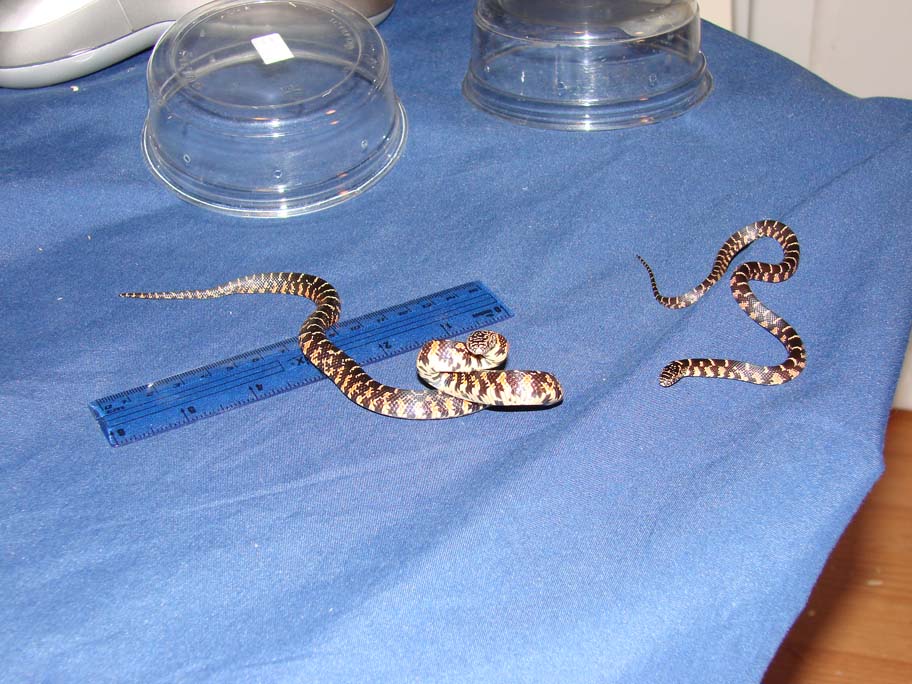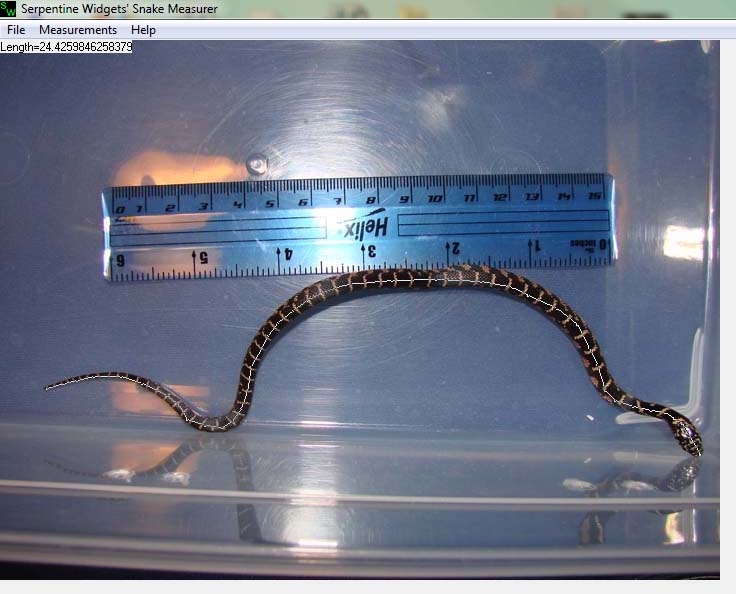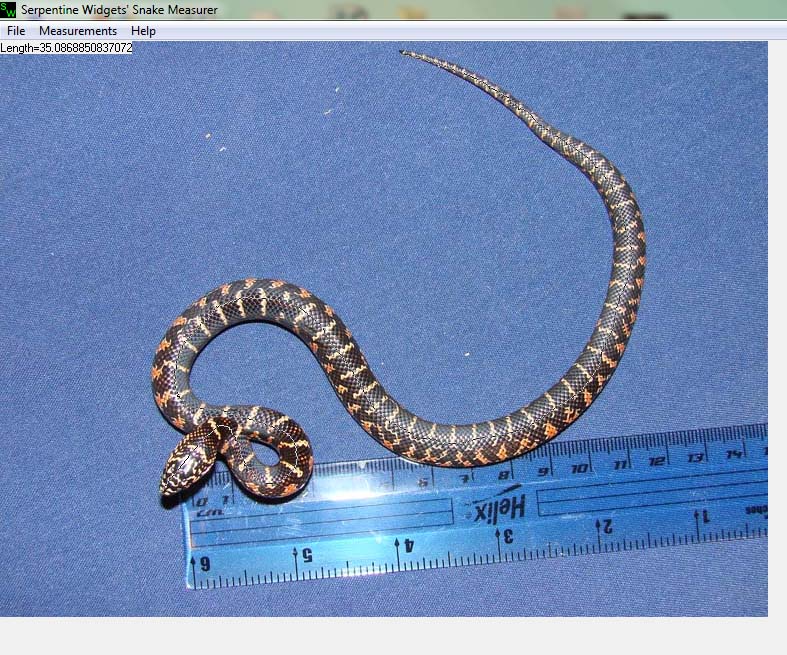Khaman
Headed for rehab.
Dr Burger collected eggs from a black racer in a pine snake nest as well as eggs from a wild caught king from Burlington County New Jersey. I used eggs from captive bred Florida Kings.
I won’t bore you with the specifics but 11 eggs were laid on June 1st and were split into three groups. Three eggs were incubated at 25C (77F) (Group A), four at 32C (89.6F) (Group B), and four at 28C (82.4F) (Group C).
Group A at 66 days has yet to hatch but all three still look good. Group B all hatched in 53 days. Group C took 38-40 days to hatch.
Group C had an average hatch weight of 16g; Group B had an average hatch weight of 5g. This is inconsistent with Dr. Burger’s findings that the slower the development is and longer the hatchling is able to stay in the egg the more robust it will be. Her results showed no major differences to weight.
Group C had an average hatch length of 32.02 cm. Group B had an average hatch length of 24.37 cm. This is consistent with Dr. Burger’s findings that the eggs incubated at higher temps tend to be shorter than those incubated at lower temps.
Dr. Burger also noted that motor skills and feeding response was greatly decreased in the snakes that were incubated at the higher temps. The same behavior was also noted Group B, two of the snakes refuse to strike at any stimuli one will strike only after repeated and prolonged stimuli (Tease feeding). Group C will aggressively rear in a threat response with little to no provocation and repeatedly strike.
Dr. Burger does not mention feeding responses or records of her animals but to date Group B has eaten an average of 7 meals with one still requiring live which is more difficult for me to acquire than F/T. Group C has refused F/T and live meals repeatedly.

Snake on the left is from Group C on the right Group B

Group B


Group C
I won’t bore you with the specifics but 11 eggs were laid on June 1st and were split into three groups. Three eggs were incubated at 25C (77F) (Group A), four at 32C (89.6F) (Group B), and four at 28C (82.4F) (Group C).
Group A at 66 days has yet to hatch but all three still look good. Group B all hatched in 53 days. Group C took 38-40 days to hatch.
Group C had an average hatch weight of 16g; Group B had an average hatch weight of 5g. This is inconsistent with Dr. Burger’s findings that the slower the development is and longer the hatchling is able to stay in the egg the more robust it will be. Her results showed no major differences to weight.
Group C had an average hatch length of 32.02 cm. Group B had an average hatch length of 24.37 cm. This is consistent with Dr. Burger’s findings that the eggs incubated at higher temps tend to be shorter than those incubated at lower temps.
Dr. Burger also noted that motor skills and feeding response was greatly decreased in the snakes that were incubated at the higher temps. The same behavior was also noted Group B, two of the snakes refuse to strike at any stimuli one will strike only after repeated and prolonged stimuli (Tease feeding). Group C will aggressively rear in a threat response with little to no provocation and repeatedly strike.
Dr. Burger does not mention feeding responses or records of her animals but to date Group B has eaten an average of 7 meals with one still requiring live which is more difficult for me to acquire than F/T. Group C has refused F/T and live meals repeatedly.
Snake on the left is from Group C on the right Group B

Group B


Group C
